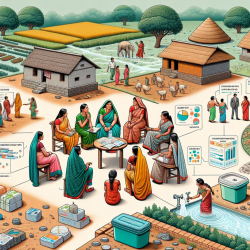Child and adolescent mental health (CAMH) is a critical global health priority, yet services remain limited, especially in low- and middle-income countries (LMICs). A recent study, "A situational analysis of child and adolescent mental health services and systems in the Western Cape Province of South Africa," provides valuable insights into the current state of CAMH services and offers a roadmap for improvement. As practitioners, you have the power to implement these findings and drive meaningful change in your communities.
Key Findings from the Research
The study utilized the World Health Organization Assessment Instrument of Mental Health Systems (WHO-AIMS) to evaluate six domains of CAMH services in the Western Cape. Here are some of the key findings:
- Policy and Legislative Framework: There was no provincial CAMH policy or implementation plans to support the national CAMH policy. Additionally, there was no CAMH-specific budget.
- Clinical Services: There was a lack of dedicated CAMH services at primary and secondary care levels, and no specialist CAMH services in rural districts.
- Human Resources: The CAMH workforce was small and variable, with significant gaps in training for primary healthcare staff.
- Public Education: Few public health campaigns focused on CAMH, and there was limited evidence of formal intersectoral collaboration.
- Health Information Systems: Significant limitations existed, including a lack of child- and adolescent-specific data for policy development and monitoring.
Actionable Steps for Practitioners
To improve CAMH services, practitioners can take several actionable steps based on the research findings:
- Advocate for Policy Development: Work with local health authorities to develop and implement provincial CAMH policies that align with national guidelines.
- Enhance Training: Provide or advocate for specialized training programs for primary healthcare staff to better equip them in diagnosing and treating CAMH issues.
- Promote Public Awareness: Initiate or support public health campaigns to raise awareness about CAMH and reduce stigma associated with mental health disorders.
- Collaborate Across Sectors: Foster partnerships with educational institutions, social services, and non-profits to create a more integrated approach to CAMH.
- Improve Data Collection: Advocate for the implementation of robust health information systems that can capture child- and adolescent-specific data to inform policy and practice.
Encouraging Further Research
While the study provides a comprehensive overview, it also highlights the need for further research, particularly from the perspectives of service providers and users. Practitioners are encouraged to engage in or support research initiatives that can provide deeper insights into the barriers and facilitators of effective CAMH services.
By implementing these steps and continuing to advocate for better CAMH services, practitioners can make a significant impact on the mental health and well-being of children and adolescents in their communities.
To read the original research paper, please follow this link: A situational analysis of child and adolescent mental health services and systems in the Western Cape Province of South Africa.










